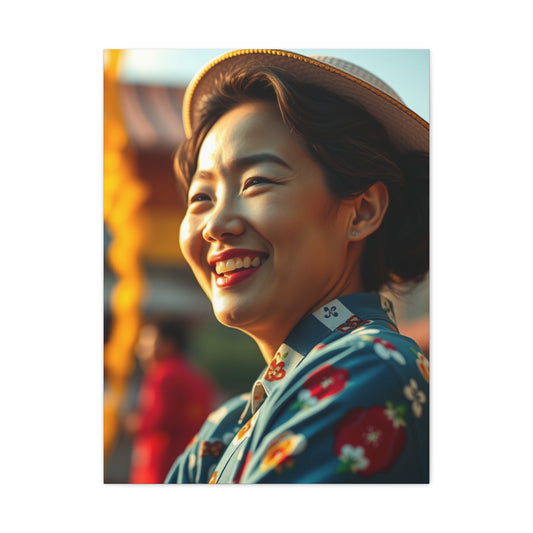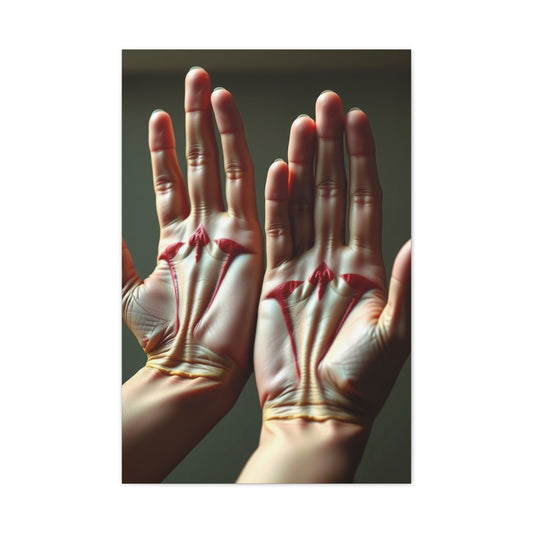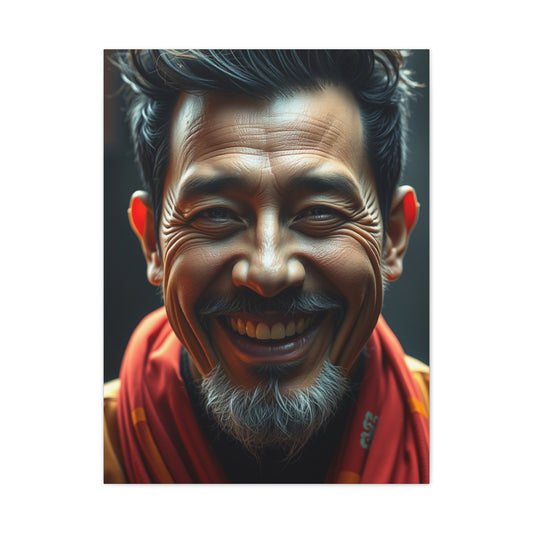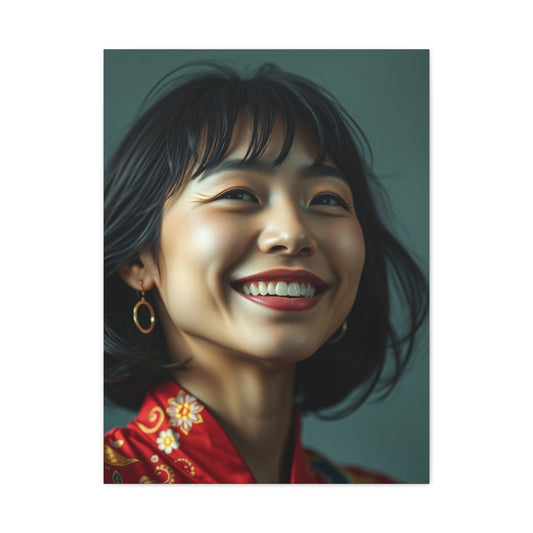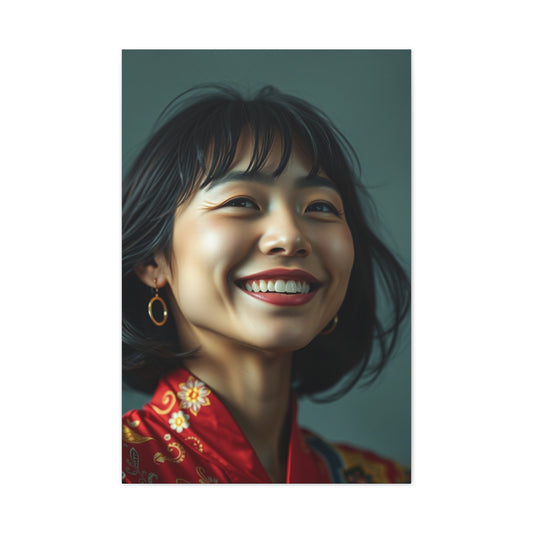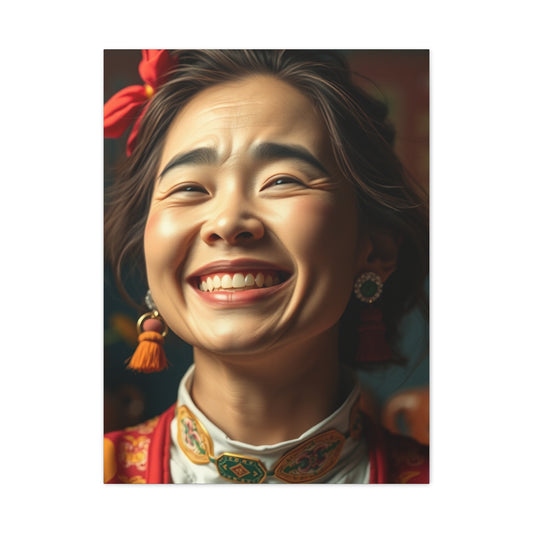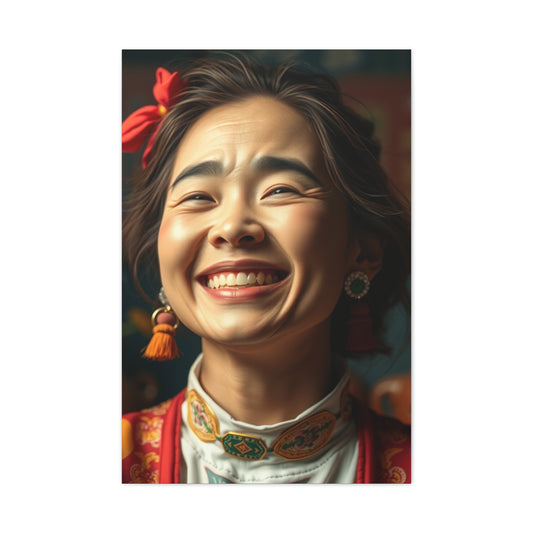An In-Depth Look at Roman Szmal's Aquarius Watercolors and Their Exceptional Mixing Palette
Roman Szmal Aquarius Watercolors have rapidly gained recognition among artists for their exceptional quality, vibrant hues, and precise craftsmanship. Manufactured in Poland, these watercolors are produced in small batches, ensuring that each color is consistent, high-quality, and meets the expectations of professional artists. This dedication to excellence has helped Roman Szmal establish a strong presence in the art community. What truly sets these watercolors apart is their impressive palette of 180 different shades, with a focus on single-pigment formulations. Over 100 of these colors are composed of just one pigment, allowing artists to achieve unparalleled transparency, vibrancy, and depth in their work. This focus on purity and clarity in pigment composition allows artists to experience the full intensity and brightness of each color, as opposed to the muted or muddied tones that often result from using multiple pigments in a single paint.
One particular set that stands out in the Roman Szmal Aquarius range is the Mixing Palette, which includes 14 distinct colors. Of these, 13 are composed of single-pigment formulations, with only one Quinacridone Gold made from a blend of two pigments. This careful selection of colors is designed to empower artists with the versatility to create a full spectrum of hues, all while ensuring the ease of mixing and layering to produce stunning, lifelike paintings. The set emphasizes simplicity, which proves ideal for artists who wish to streamline their materials without compromising on the vibrancy and quality of their colors. It offers a balance of efficiency and creativity, making it an attractive option for those who need a versatile, professional-grade watercolor palette that’s easy to work with.
When unboxed, the Roman Szmal Aquarius Mixing Palette exudes a sense of simplicity and practical design. Its metal enamel box, though unadorned, offers an excellent blend of portability and function. With a folding palette inside the box, artists have ample space to mix and blend their colors, while the extra mixing space provided in the lid adds even more convenience. This compact design also includes a thumb loop, making the box comfortable to hold while working outdoors or while traveling. Although there isn’t much room for additional watercolor pans, the set can accommodate a couple of brushes, making it an ideal travel companion for artists who prefer working on the go or outside of a studio setting. For those who like to keep their gear minimal and efficient, this palette offers everything an artist could need, without excess weight or complexity.
In addition to the well-curated selection of colors, the palette includes a blank printed color chart made from cold-pressed paper. This serves a dual purposefirst, as a reference guide for organizing the colors, and second, as a canvas for hands-on experimentation. Artists can use this chart to mix their colors and swatches, enabling them to understand how each pigment behaves on paper. The process of mixing colors and observing the way they interact in real-time can help deepen an artist’s understanding of the medium and how each color can be manipulated to achieve the desired effects. The color in the pan often looks different when applied to paper, so this chart is an invaluable tool for discovering the true nature of each pigment.
The Unique Color Selection of the Mixing Palette
One of the most notable features of the Roman Szmal Aquarius Mixing Palette is the careful selection of its colors. These 14 colors have been thoughtfully chosen to offer artists a diverse and versatile range, perfect for mixing, layering, and building a complete color spectrum. The palette’s colors are modern and vibrant, with an emphasis on synthetic pigments known for their lightfastness and brightness. However, artists who are accustomed to traditional, earthy tones may find the absence of classic hues such as Ivory Black, Chinese White, Raw Sienna, and even Cadmium Yellow or Red a bit surprising.
The palette’s collection of hues includes modern, synthetic pigments like Hansa Yellow Medium, Phthalo Blue, and Quinacridone-based colors, which are known for their brilliance and long-lasting stability. While these colors can be intensely vibrant and offer excellent mixing potential, they might lack the subtlety and depth that some artists expect from traditional earth tones. Additionally, more conventional hues such as Olive Green, Sap Green, and Alizarin Crimson are missing from the set, making it a departure from the typical selection found in traditional watercolor palettes. Instead, the Mixing Palette presents a more contemporary approach to color, providing artists with bold, clean hues that are well-suited to a variety of modern painting styles.
One interesting inclusion in the set is Buff Titanium, a light, neutral color that helps to balance and soften the intensity of stronger pigments. Buff Titanium is particularly useful when it comes to creating delicate mixtures or when an artist wants to tone down the vibrancy of other colors without resorting to the use of white pigment. Its ability to blend seamlessly with more intense hues makes it a versatile addition, enabling artists to create nuanced gradients and smooth transitions. This carefully curated color selection ensures that artists have a range of both vibrant and muted hues at their disposal, giving them the flexibility to create a wide variety of artistic effects.
The Practicality and Convenience of the Aquarius Mixing Palette
Beyond its color selection, the Roman Szmal Aquarius Mixing Palette stands out for its practicality and user-friendly design. One of the key advantages of this palette is its portability. The compact metal enamel box is durable and lightweight, making it easy for artists to take their watercolors on the go, whether they are working outdoors, traveling, or simply prefer to paint in different environments. The folding palette allows artists to mix their colors with ease, and the added mixing space in the lid provides even more flexibility. This design is particularly useful for plein air painters or artists who want to minimize their equipment while still having all the necessary tools to create professional-quality work.
In addition to its portability, the palette’s design also focuses on functionality. The thumb loop ensures a comfortable and secure grip, allowing artists to hold the palette steadily while working. This is especially important when painting outdoors, where the conditions may not always be ideal. Whether an artist is painting in a park, on a beach, or in a bustling city, the Mixing Palette provides the stability and convenience needed to focus on the creative process without being distracted by the tools themselves.
While the palette does not offer much room for additional watercolor pans, it does have enough space to hold a few brushes, which makes it an excellent choice for artists who prefer to keep their painting kit light and efficient. For those who need to carry extra pans, the portability of this set may still meet their needs by serving as a compact, on-the-go solution for daily painting. The palette’s minimalist approach ensures that artists are not bogged down by unnecessary accessories, allowing them to focus on what matters: their artwork.
The included blank color chart is another thoughtful addition that enhances the usability of this set. It not only helps artists organize their colors but also invites them to engage in hands-on experimentation. By creating their color mixes and documenting their results on the color chart, artists can gain a deeper understanding of how the pigments react with one another and how to achieve the specific effects they are seeking. This hands-on approach to watercolor mixing fosters creativity and exploration, encouraging artists to push the boundaries of their artistic practice and experiment with new techniques.
Understanding the Roman Szmal Aquarius Watercolors: A Palette Designed for Artistic Excellence
The Roman Szmal Aquarius Mixing Palette is more than just a collection of watercolors. It is a carefully curated set of colors designed to provide both flexibility and control, allowing artists to explore and expand their creative boundaries. Featuring a variety of warm and cool hues, the palette provides a spectrum of colors that can be mixed to produce stunning results. Each pigment in this set is thoughtfully chosen to ensure it enhances the artist's work, offering the potential for endless combinations, from bright, lively tones to more muted, subtle hues. The secret behind the palette's extraordinary performance lies in its use of single-pigment colors, each with its unique characteristics.
The Power of Single-Pigment Watercolors: Purity and Vibrancy at Your Fingertips
One of the standout features of the Roman Szmal Aquarius watercolors is the emphasis on single-pigment colors. These pigments are celebrated for their transparency and purity, allowing artists to achieve clean, vibrant mixes that maintain their intensity. In contrast to multi-pigment paints, which can often result in muddy or dull mixtures, single-pigment hues retain their clarity and brilliance when combined, making them ideal for creating intricate blends and subtle color transitions. This is especially important in watercolor painting, where luminosity and transparency are key to achieving beautiful, flowing compositions.
For example, Quinacridone Gold, one of the most striking colors in this palette, offers a rich, warm orange-gold tone that can be mixed with other pigments like Hansa Yellow Medium to create softer, more subdued yellow shades. The resulting mixtures evoke the golden warmth of Indian Yellow, a hue cherished by traditional watercolor artists for its ability to add a glowing richness to paintings. Quinacridone Gold’s ability to retain its vibrancy even when mixed makes it a versatile tool for creating a range of colors, from rich, golden tones to more delicate, muted yellows.
Similarly, Quinacridone Red, a cool and sugary pink, is another gem in the set. Known for its delicate yet vivid appearance, Quinacridone Red is perfect for rendering soft, feminine compositions like floral arrangements and portraits. When diluted, this pigment can also create beautiful purple-pinks, allowing artists to experiment with a wide range of effects, from subtle washes to bold, vibrant strokes. This color’s clean, pure nature gives it a versatility that makes it a go-to choice for many watercolorists.
Expanding Your Color Palette: From Warm Reds to Granulating Blues
The Roman Szmal Aquarius Mixing Palette offers more than just primary colors, including a range of pigments that expand the possibilities of any artist’s color palette. Pyrrole Rubine, a rich and intense red, is a standout color that works exceptionally well for creating deep reds and vibrant hues. It serves as an excellent alternative to more common colors like Alizarin Crimson, providing a deeper, more saturated red that can be mixed with Buff Titanium to produce soft, dusty pinks ideal for portraits and floral studies. The combination of Pyrrole Rubine with Quinacridone Red opens up the opportunity to explore a broad spectrum of red tones, from light, ethereal pinks to intense, dramatic reds that evoke passion and emotion.
Another notable color in the palette is Cobalt Cerulean. This hue stands out for its unique granulation properties, which make it perfect for creating textures and effects that mimic natural elements such as skies, oceans, and distant landscapes. When painted onto paper, Cobalt Cerulean tends to separate into various particles, creating a dappled or speckled effect that adds an organic, dynamic quality to any painting. This color’s ability to blend seamlessly with other pigments means it can be used in both delicate washes and vibrant, structured compositions, offering artists a wide range of options for their work. Whether used for a soft, misty background or a bold, bright statement piece, Cobalt Cerulean brings depth and movement to a watercolor composition.
In contrast to these vibrant hues, Cyprus Raw Umber Deep offers a much more subdued and earthy tone. This color is grayish and muted, making it ideal for creating shadowed areas or neutral undertones in a painting. Its transparency and granulating properties are perfect for adding depth and texture to natural scenes such as rocks, soil, and tree bark. Cyprus Raw Umber Deep works as a versatile base color, providing a grounded foundation that enhances the richness of other pigments. Artists can use it to create subtle, yet captivating details in their work, giving their paintings a sense of natural realism and harmony.
Synthetic Pigments: Modern Touch for Timeless Results
The inclusion of synthetic pigments like Phthalo Green and Phthalo Blue in the Roman Szmal Aquarius Mixing Palette highlights a modern approach to watercolor painting. Known for their intense vibrancy and high tinting strength, these pigments can be daunting for artists who are more accustomed to traditional, earthy tones. However, when used with care, these colors can yield stunning results, particularly in the creation of lush, vibrant greens that are perfect for landscape scenes or seascapes.
Phthalo Green, for instance, is a powerful pigment that can be mixed with other colors to create a wide range of greens, from deep forest hues to lighter, more tranquil tones. Its rich, saturated appearance makes it ideal for depicting foliage, grasses, and other natural elements. Similarly, Phthalo Blue can be used to create vivid, energetic blues that are perfect for capturing the vastness of the sky or the depth of the ocean. While both of these colors are potent and can easily overpower other pigments, they are incredibly effective when used in moderation and blended with complementary hues.
What makes these synthetic pigments even more appealing is their ability to mix harmoniously with other colors in the palette. For example, the granulation of Cobalt Cerulean can enhance the luminous quality of these synthetic greens and blues, creating dynamic, multi-dimensional effects. This synergy between colors allows artists to create landscapes that are both vibrant and natural-looking, without the risk of the colors becoming too harsh or artificial.
Maximizing Potential: A Balanced Palette for Every Artist
The Roman Szmal Aquarius Mixing Palette offers an expansive array of pigments that cater to both traditional and contemporary artistic practices. With a rich combination of warm, cool, vibrant, and muted hues, it provides an almost infinite range of color mixing possibilities. From the soft, delicate tones created by Quinacridone Red and Quinacridone Gold to the deep, structured hues produced by Pyrrole Rubine, this palette has the potential to enhance any artistic vision.
The inclusion of granulating colors like Cobalt Cerulean and Cyprus Raw Umber Deep adds another layer of versatility, enabling artists to create textured, atmospheric effects in their work. Meanwhile, the synthetic pigments, such as Phthalo Green and Phthalo Blue, offer modern hues that are perfect for depicting vibrant landscapes and natural scenes.
Despite the impressive variety of colors included, there is always room for improvement. Some artists may feel the palette could benefit from additional yellow tones, such as a Yellow-Orange or a subtle greenish gold. These colors would provide even more options for creating warmer, earthier mixes and further balance the palette’s cool and warm hues. By incorporating such pigments, the palette would offer even greater flexibility, making it a more comprehensive tool for every artist’s needs.
Mastering Color Mixing in Landscape Painting: The Roman Szmal Aquarius Palette
When an artist begins their journey with the Roman Szmal Aquarius Mixing Palette, one of the first hurdles to overcome is figuring out how to harmonize the intense and subtle pigments in a way that mimics the natural beauty of a landscape. This palette offers a wonderful range of bright, vibrant hues and more muted, earthy tones. While this creates a great opportunity for color experimentation, it also presents a challenge, especially when trying to control the saturation of powerful colors such as Phthalo Blue or Hansa Yellow.
Unlike traditional palettes that often contain pre-mixed greens, the Roman Szmal Aquarius Mixing Palette doesn’t feature a ready-made green. This absence might initially seem like a limitation, but it opens up an exciting possibility for creativity. Artists can explore color mixing techniques to create a vast range of natural greens suited for depicting foliage, grasses, and trees. Through a careful combination of colors like Phthalo Blue, Cobalt Cerulean, Quinacridone Gold, and Cyprus Raw Umber, artists can produce a surprising array of greens that appear more lifelike and nuanced. The key to mastering this mix lies in the artist’s ability to control the pigment quantities, as using even a small amount of the intense colors can easily overwhelm the mixture.
Creating Lifelike Greens: The Art of Color Mixing for Foliage and Trees
One of the most exciting aspects of working with the Roman Szmal Aquarius Mixing Palette is the chance to step away from traditional greens and create custom blends that resonate with the natural world. Green hues are a vital part of landscape painting, from the rich tones of lush meadows to the softer shades found in distant forests. Since the palette does not include conventional pre-mixed greens, artists can craft these tones by mixing certain key colors in a way that reflects the true diversity of nature.
By combining colors like Phthalo Blue and Cobalt Cerulean with Quinacridone Gold or Cyprus Raw Umber, artists can produce vibrant and more muted greens that are perfect for capturing the lushness of foliage or the subdued tones of shaded areas in the landscape. The addition of Quinacridone Gold adds a warm, golden touch to the mix, which is particularly useful for depicting the variety of greens found in sunlight-drenched forests, grasslands, or fields. Cyprus Raw Umber, with its rich, earthy tones, can also be mixed into the palette to create deeper, more somber greens ideal for painting the shadows under tree canopies or foliage that is in the shade.
However, the challenge here is to avoid the overpowering effect of too much pigment. Phthalo Blue, in particular, is an intense and highly saturated pigment, and it’s easy to let it dominate a mixture. The trick is to use these vibrant colors sparingly and gradually add them into the mix, ensuring a more controlled and subtle result. This can take practice, but with each new experiment, the artist develops a deeper understanding of how each pigment behaves when combined with others, and this knowledge will undoubtedly improve the final painting outcome.
The Magic of Cyprus Raw Umber Deep and Cobalt Cerulean in Landscape Art
Another standout color in the Roman Szmal Aquarius palette is Cyprus Raw Umber Deep. This pigment’s transparency and earthy tones make it an ideal choice for portraying the subtle details of a landscape, such as the shadows and mid-tones found in natural scenes. Cyprus Raw Umber Deep has a remarkable ability to enhance depth in the painting without overwhelming the lighter colors, making it perfect for creating the feel of distance or shadow. It can be used in various ways, from painting the dark soil of a forest floor to capturing the muted tones of mountains in the distance, or even for introducing shadowed areas in tree trunks and rocks.
For artists painting larger natural scenes, Cyprus Raw Umber Deep can provide the necessary tonal foundation, anchoring the scene while allowing brighter colors to shine through. This pigment, due to its subtle transparency, gives the artist the freedom to layer it without losing the underlying vibrancy of other colors. Whether used in combination with lighter tones for subtle highlights or deeper hues for dramatic shadowing, Cyprus Raw Umber Deep proves to be an invaluable tool in creating realistic textures and structures in the natural world.
In contrast, Cobalt Cerulean, another key color in the palette, has a completely different role in landscape painting. Known for its granulating properties, Cobalt Cerulean is a favorite when it comes to capturing the texture and atmosphere of the sky. The granulation of this pigment allows artists to achieve the organic look of clouds or the fine texture of a breezy sky, mimicking the natural variations that we see when we look at the heavens. Whether it’s the clear blue of a calm morning or the deep, dynamic hues of a sunset, Cobalt Cerulean can be combined with other colors like Phthalo Blue or Quinacridone Red to create rich and varied sky washes.
This particular quality makes Cobalt Cerulean especially effective when painting bodies of water as well, where the reflective nature of water can mirror the sky. By adjusting the mix of Cobalt Cerulean and other colors, artists can replicate the ever-changing hues of water and skies, whether it’s a serene, still lake or the energetic, vibrant colors of an ocean at sunset. The ability to blend these colors in washes adds a dynamic layer to landscape paintings, allowing the artist to capture movement, light, and texture in a way that feels truly natural and lifelike.
Exploring the Process: The Beauty of Discovery in Color Mixing
One of the greatest joys of working with the Roman Szmal Aquarius palette lies in the process of color mixing itself. The palette offers a broad range of hues, from deeply saturated to more muted, subdued tones. This variety encourages exploration, and often, the most beautiful results come from the act of experimentation rather than aiming for the perfect shade from the start.
Understanding how each color interacts with others can take time. It’s about discovering the subtle shifts in hue, tone, and texture that emerge as one mixes pigments. For instance, the deep blues of Phthalo Blue can transform into complex greens when mixed with Quinacridone Gold, but adding too much of either color can shift the mix too far. The more an artist works with these pigments, the better they become at judging how much of each pigment to use, and how to build up the layers of their painting without losing control over the color balance.
Sometimes, unexpected results can lead to the most stunning discoveries in a painting. Whether it's a new shade of green that emerges from a carefully controlled mixture or a sky wash that develops a surprising level of depth, the beauty of using the Roman Szmal Aquarius palette lies in the element of surprise. Artists are often rewarded for their patience and perseverance in adjusting mixes, fine-tuning their approach to achieve the exact atmosphere or feel they want for their landscape scene.
It’s also important to remember that color mixing in landscape painting is not a precise science. The goal is not always to get the "perfect" color but to evoke the mood or essence of the natural world. Nature itself is never static, and the constantly shifting colors of light, atmosphere, and terrain offer infinite possibilities for interpretation. As artists experiment with the palette, they learn to embrace these variations and use them to their advantage, creating landscapes that are full of life, energy, and visual interest.
The Roman Szmal Aquarius Mixing Palette, with its rich selection of pigments, offers endless possibilities for creating vibrant, dynamic, and realistic landscape paintings. By exploring the relationships between colors, mastering the art of mixing, and embracing the process of discovery, artists can create works of art that truly capture the beauty of nature in all its complexity. The palette not only allows for the creation of stunning visual scenes but also enables the artist to infuse their work with personal style and innovation, making every landscape painting a unique expression of the natural world.
Mastering the Roman Szmal Aquarius Mixing Palette: A Guide to Unlocking Its Full Potential
The Roman Szmal Aquarius Mixing Palette has established itself as a powerful tool for watercolor artists, offering a rich spectrum of colors that promise endless creative possibilities. This palette is a treasure trove of vibrant pigments that can help artists push their creative boundaries and refine their color mixing skills. With pigments renowned for their intensity and granulating properties, it’s a versatile set that is ideal for those willing to experiment and explore the depths of watercolor painting. However, while this palette is filled with potential, truly mastering it requires time, patience, and a deep understanding of its colors, textures, and characteristics.
As you journey through the process of learning how to work with these potent pigments, it’s essential to recognize that it’s not just about mixing colors. The power of the Roman Szmal Aquarius Mixing Palette lies in its ability to create textures and depths that can completely transform a painting. The palette invites you to experiment with color combinations and discover the subtle intricacies of mixing not just for hue, but also for texture, depth, and mood. When used thoughtfully, this palette can elevate any watercolor painting, adding layers of richness and complexity that can breathe life into even the simplest compositions.
Harnessing the Granulating Effects of Cobalt Cerulean and Cyprus Raw Umber
One of the standout features of the Roman Szmal Aquarius Mixing Palette is its granulating pigments, which add a layer of unique texture to any painting. Pigments such as Cobalt Cerulean and Cyprus Raw Umber are especially noted for their granulation properties, which are perfect for creating atmospheric effects and bringing depth to your artwork. These pigments behave in a way that allows them to form organic patterns and textures when applied, creating a more natural, tactile appearance on the paper.
Artists often use granulating pigments to enhance their work by introducing textural effects that simulate the unpredictability of nature. Imagine the soft, uneven surface of distant mountains or the rough, weathered texture of a stone wall effects can be achieved using granulating pigments. The granular texture of these colors allows you to capture light and shadow in ways that traditional, smooth pigments simply cannot.
When used skillfully, granulating pigments like Cobalt Cerulean and Cyprus Raw Umber can also help create dynamic contrasts in your painting. The unpredictable nature of these colors brings an element of spontaneity, allowing you to produce work with a sense of movement and life. Whether you’re creating a moody sky, painting the texture of fabric, or conveying the feel of a distant landscape, the textures provided by these pigments can help add the necessary depth and visual interest to make your painting come alive.
Refining Your Mixing Techniques for Greater Depth and Flexibility
While the Roman Szmal Aquarius Mixing Palette offers a dazzling range of colors, the true mastery of this set comes when you learn how to control the intensity and application of these pigments. These colors are intense, meaning that a little goes a long way. As you experiment with different mixes, you’ll begin to understand the strengths and limitations of each pigment. By adjusting the amount of paint, water, and layering techniques you use, you can achieve the perfect balance between vibrant intensity and subtle softness.
Developing an intuitive understanding of how much pigment to use in different mixtures is key to mastering this palette. For lighter washes, simply use less pigment and more water to create delicate, transparent layers. On the other hand, for deeper, more intense hues, use more concentrated mixes to bring out the vibrancy of the pigments. The flexibility of this palette allows you to experiment with a range of effects, from light and airy to deep and saturated, depending on the mood you wish to convey.
Over time, you’ll notice that you develop a sense of how to layer pigments to create realistic shadows, highlights, and gradients. Layering is a crucial technique for adding depth to your work, and the Roman Szmal Aquarius Mixing Palette supports this approach by offering a variety of colors that can be combined in countless ways. As you practice mixing, you’ll learn how to control the flow of color and pigment, allowing you to paint with greater precision and confidence.
Endless Color Combinations: Discovering New Hues and Textures
One of the most exciting aspects of the Roman Szmal Aquarius Mixing Palette is the vast potential for discovering new colors through mixing. With its wide selection of pigments, the possibilities for creating unique shades are practically endless. Whether you're looking to achieve the perfect tone for a sunset sky, the rich hues of a flower, or the deep green of a forest, this palette offers the perfect foundation for mixing the colors you envision.
Each pigment in the Roman Szmal Aquarius Mixing Palette is designed to interact with others in intriguing ways. For example, combining two complementary colors can create a neutral tone, while mixing primary colors can yield bright, vivid secondary hues. Experimenting with the proportions of each pigment will help you fine-tune your mixes and uncover new possibilities that you might not have initially considered. This process of discovery can be immensely rewarding as you learn the intricacies of each pigment's behavior and how it responds to others in different combinations.
Mixing isn’t just about creating new colors, however. It’s also about texture. As you combine pigments, you’ll begin to notice how certain colors granulate more than others, creating effects that add an entirely new layer of interest to your painting. These interactions can add richness and complexity to your artwork, helping you create a piece that feels dynamic and alive. The ability to mix and layer colors in unique ways will help you develop your style and elevate your work to new levels.
The Journey to Mastery: Patience and Experimentation
While the Roman Szmal Aquarius Mixing Palette is incredibly versatile, mastering it requires patience and a willingness to experiment. Just like any other skill, developing expertise in color mixing takes time. At first, the intensity of the pigments might seem overwhelming, and it can take time to adjust to the strength of each color. However, as you gain more experience with these colors, you’ll learn how to control their power and use them to their full potential.
The key to mastering this palette lies in experimentation. Don’t be afraid to mix different pigments and explore their interactions. Every time you mix a new combination, you are not just creating a new color, but also gaining insight into the unique properties of each pigment. As you continue to experiment, you’ll begin to develop a deeper understanding of how to work with different color temperatures, textures, and transparencies to achieve the results you want.
Ultimately, the Roman Szmal Aquarius Mixing Palette is a tool that can help you express your creative vision in powerful, dynamic ways. Whether you are creating abstract works, detailed landscapes, or still-life compositions, this palette offers the flexibility to bring your ideas to life with vivid, breathtaking colors. It’s an invaluable resource for any artist who wants to deepen their understanding of color and texture, pushing the limits of their watercolor painting to new heights.
Conclusion: The Rewards of Mastery and the Path Ahead
In conclusion, the Roman Szmal Aquarius Mixing Palette is not just a set of high-quality pigments is a gateway to endless creative exploration. By learning how to master its colors and textures, you will gain the ability to create watercolors with unparalleled depth, vibrancy, and beauty. While the journey may take time, the rewards are well worth the effort. As you continue to experiment with different color combinations, textures, and techniques, you will find that the possibilities for creating stunning watercolor paintings are limitless. With patience, practice, and an adventurous spirit, you’ll unlock the full potential of this remarkable palette, transforming your artwork and honing your craft to perfection.












